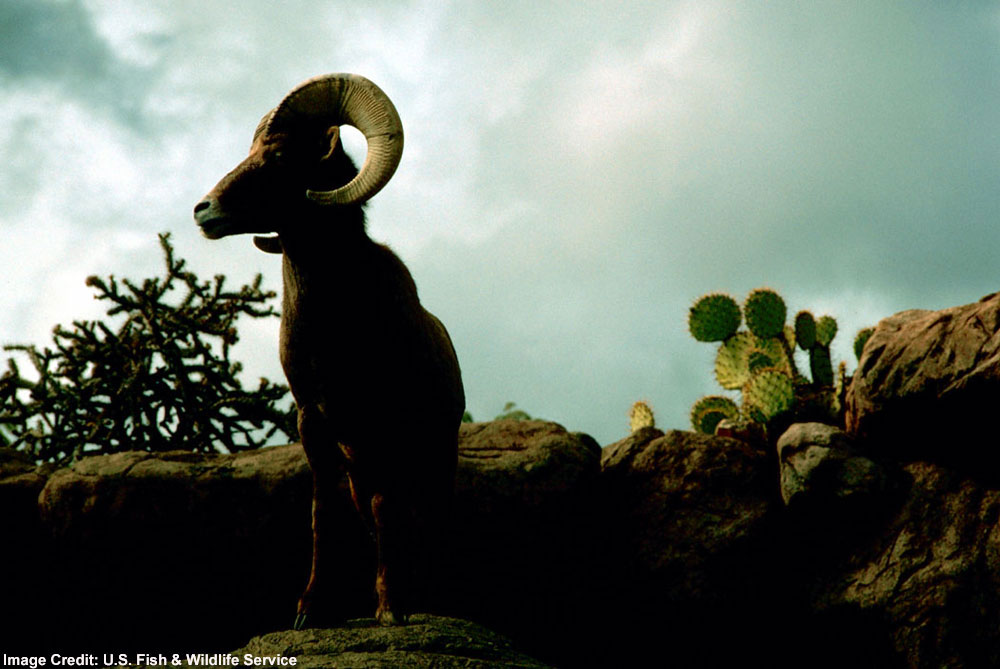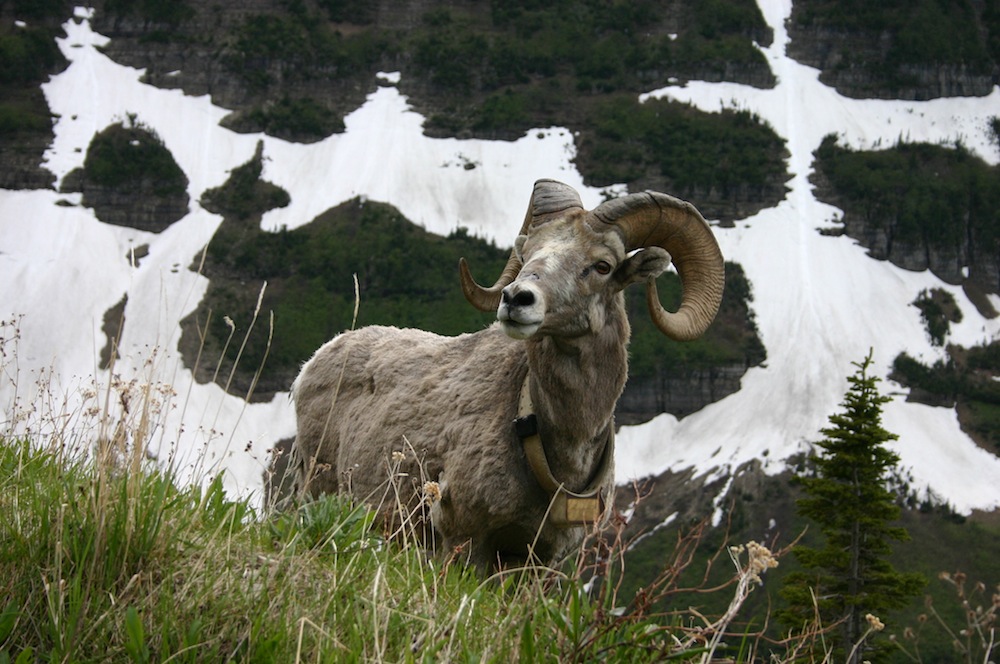Rams: Facts About Male Bighorn Sheep

Rams are male bighorn sheep, animals that live in the mountains and often settle arguments with fights that include ramming their heads into others. Not to be confused with mountain goats, rams can be identified by their long, curved horns, long fur, and split hooves. Bighorn sheep are bovines and are related to antelopes, bison, buffalo, cattle and goats.
Size
Rams are typically 5 to 6 feet tall (1.5 to 1.8 meters) from head to tail, and weigh 262 to 280 lbs. (119 to 127 kilograms), though they can grow to over 300 lbs. (136 kg). Rocky Mountain bighorn rams have massive horns that weigh more than all of the bones in their bodies. A set of horns can weigh 30 lbs. (14 kg). Ewes, or female bighorn sheep, typically weigh 30 to 40 percent less than the rams, according to the National Bighorn Sheep Center.
Habitat
Bighorn sheep live in the Rocky Mountain region of North America, ranging from Mexico, northward across the western United States and into Canada. They live in the rocky areas, balancing on the boulders with their hooves, which are rough on the bottom to give the sheep more traction. Thanks to their amazing balance, bighorn sheep can stand on ledges that are only 2 inches (5 centimeters) wide. They can also jump 20 feet (6 m) and can go up a mountain at a brisk 15 mph (24 km/h). The only better mountain climbers in the animal world are mountain goats.
Desert bighorn sheep, a subspecies, live in Death Valley, California, as well as Nevada, Texas and northern Mexico. They can live on desert mountains as high as 4,000 feet (1,200 m). They get most of their water from eating plants to survive, according to the Natural History Museum of Los Angeles.
Habits
Bighorn sheep have very good eyesight, which allows them to judge distances accurately when jumping, according to the University of Michgan's Animal Diversity Web (ADW). They also watch animals as far as a mile away.
Herds are separated by gender. Females live in nursery herds, with five to 100 members, which include adult females and lambs of both genders. Male-only bachelor herds usually contain five to 50 rams at one time, and they sometimes engage in homosexual activity, according to ADW.
Rams fight to decide who will be the dominant male in their group. During the fight, the males will face each other, rear up on their back legs and crash their huge horns into each other. Sometimes they charge as fast as 40 mph (64 km/h). Eventually, one of the rams ends up submitting and the winner is the new leader. This process can take hours.
Get the world’s most fascinating discoveries delivered straight to your inbox.
Diet
Rams are herbivores. They typically eat seeds, grass and plants. Their diet changes depending on the season, though. In the summer, they eat grasses or sedges and in the winter, bighorns eat woody plants, such as sage, willow and rabbit brush, according to Defenders of Wildlife. What they eat also depends on the type of bighorn. For example, desert bighorns eat plants found in their location, such as desert holly and desert cactus.
One swallow of food isn't enough for these animals. They will regurgitate their food into their mouths. This regurgitated food is called cud. Then, they will rechew the food and swallow it once again. This is part of their digestion process.
Offspring
The dominant ram earns the right to mate with the females. Mating season, called the rut, is in the autumn. Males are not usually strong enough to mate until they are at least 3 years old.
Female bighorns are pregnant for about 175 days, or about 25 weeks. They usually have only one lamb at a time. In the spring, the young are born on high ledges that protect them from predators.
Lambs are dependent on their mothers for the first four to six months of their lives, though they can walk almost as soon as they are born. The mortality rate for lambs is quite high. On average, 5 to 30 percent of lambs don't make it to adulthood, according to ADW, though sometimes the death rate can be as high as 80 percent.
Rams typically don't mate until they are around 7 years old. They can live from 10 to 19 years in the wild.
Classification/taxonomy
The taxonomy of bighorn sheep, according to the Integrated Taxonomic Information System (ITIS), is:
Kingdom: Animalia Subkingdom: Bilateria Infrakingdom: Deuterostomia Phylum: Chordata Subphylum: Vertebrata Infraphylum: Gnathostomata Superclass: Tetrapoda Class: Mammalia Subclass: Theria Infraclass: Eutheria Order: Artiodactyla Family: Bovidae Subfamily: Caprinae Genus: Ovis Species: Ovis canadensis Subspecies:
- Ovis canadensis auduboni(Badlands bighorn or Audubon's bighorn sheep — extinct)
- Ovis canadensis californiana (California bighorn sheep)
- Ovis canadensis canadensis (Rocky Mountain bighorn sheep)
- Ovis canadensis cremnobates (Peninsular bighorn sheep)
- Ovis canadensis mexicana (desert bighorn sheep)
- Ovis canadensis nelsoni (Nelson's bighorn sheep)
- Ovis canadensis weemsi (Weems' bighorn sheep)
Conservation status
The International Union for Conservation of Nature lists bighorn sheep as Least Concern, saying their population is widespread and not declining at any rate close enough to qualify for a listing in a threatened category. It is estimated that there are 15,500 to 15,700 bighorn sheep in Canada and more than 42,000 in the United States. It is believed that there could be several thousand bighorns in Mexico. Almost all bighorn populations are increasing or stable.
However, the U.S. Fish & Wildlife Service does list the Peninsular bighorn sheep and the California bighorn sheep (listed as a subpopulation of Sierra Nevada bighorns) as endangered.
Other resources

 Live Science Plus
Live Science Plus






